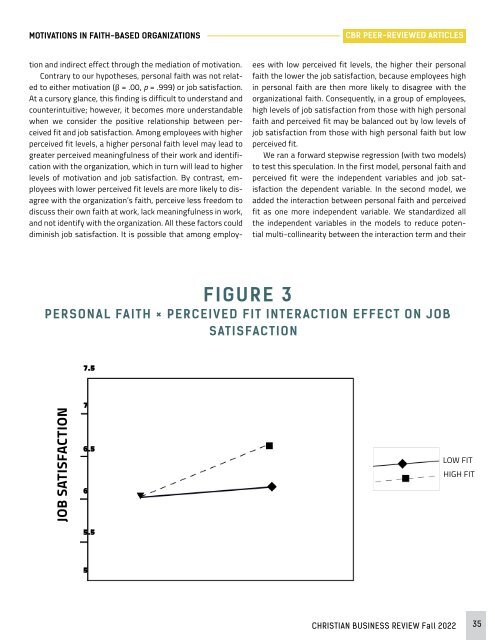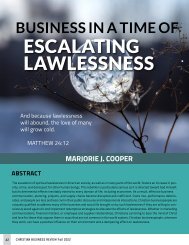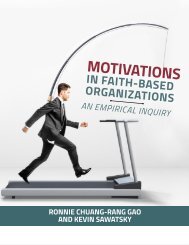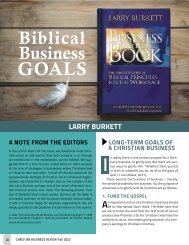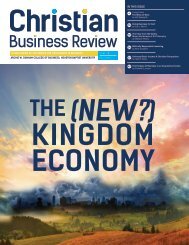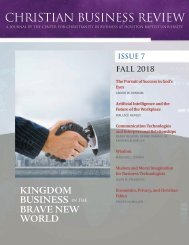Christian Business Review 2022: Pressing On Toward God's Goal
You also want an ePaper? Increase the reach of your titles
YUMPU automatically turns print PDFs into web optimized ePapers that Google loves.
MOTIVATIONS IN FAITH-BASED ORGANIZATIONS<br />
CBR PEER-REVIEWED ARTICLES<br />
tion and indirect effect through the mediation of motivation.<br />
Contrary to our hypotheses, personal faith was not related<br />
to either motivation (β = .00, p = .999) or job satisfaction.<br />
At a cursory glance, this finding is difficult to understand and<br />
counterintuitive; however, it becomes more understandable<br />
when we consider the positive relationship between perceived<br />
fit and job satisfaction. Among employees with higher<br />
perceived fit levels, a higher personal faith level may lead to<br />
greater perceived meaningfulness of their work and identification<br />
with the organization, which in turn will lead to higher<br />
levels of motivation and job satisfaction. By contrast, employees<br />
with lower perceived fit levels are more likely to disagree<br />
with the organization’s faith, perceive less freedom to<br />
discuss their own faith at work, lack meaningfulness in work,<br />
and not identify with the organization. All these factors could<br />
diminish job satisfaction. It is possible that among employees<br />
with low perceived fit levels, the higher their personal<br />
faith the lower the job satisfaction, because employees high<br />
in personal faith are then more likely to disagree with the<br />
organizational faith. Consequently, in a group of employees,<br />
high levels of job satisfaction from those with high personal<br />
faith and perceived fit may be balanced out by low levels of<br />
job satisfaction from those with high personal faith but low<br />
perceived fit.<br />
We ran a forward stepwise regression (with two models)<br />
to test this speculation. In the first model, personal faith and<br />
perceived fit were the independent variables and job satisfaction<br />
the dependent variable. In the second model, we<br />
added the interaction between personal faith and perceived<br />
fit as one more independent variable. We standardized all<br />
the independent variables in the models to reduce potential<br />
multi-collinearity between the interaction term and their<br />
FIGURE 3<br />
PERSONAL FAITH × PERCEIVED FIT INTERACTION EFFECT ON JOB<br />
SATISFACTION<br />
7.5<br />
JOB SATISFACTION<br />
7<br />
6.5<br />
6<br />
5.5<br />
LOW FIT<br />
HIGH FIT<br />
5<br />
LOW FAITH<br />
HIGH FAITH<br />
CHRISTIAN BUSINESS REVIEW Fall <strong>2022</strong> 352


